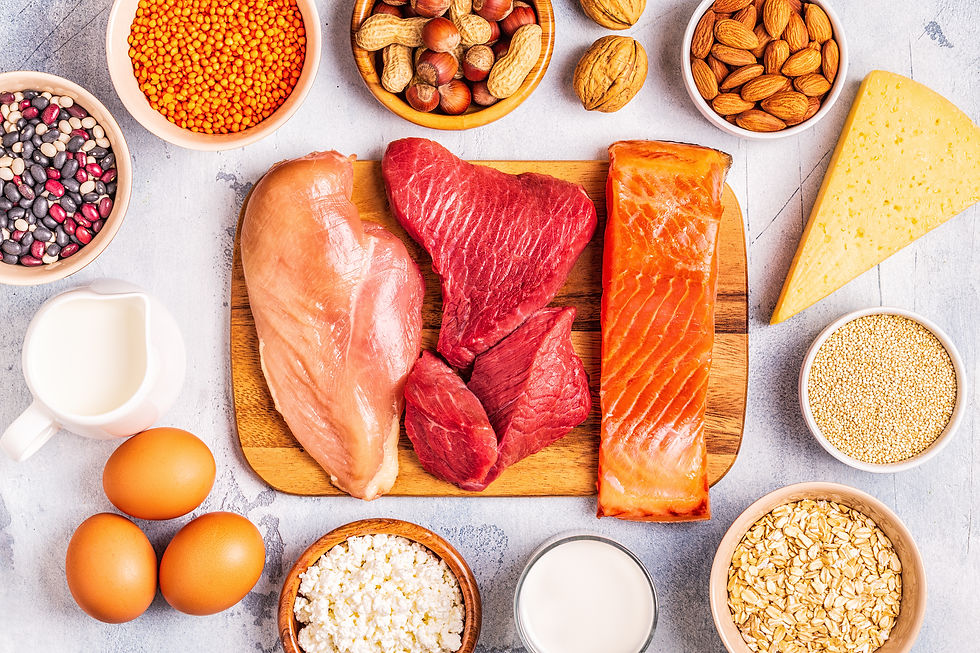Protein Supplements and Lead
- Denise Scott
- Oct 15
- 3 min read
A Consumer Reports investigation recently found that various protein supplements contain unsafe levels of lead. They evaluated both powders and shakes from plant, dairy, and animal sources. They tested multiple samples from different lots over several months.
Many of those studied contained more lead in a single serving than what is considered safe to consume in a day.

Think for a minute about how popular these products are. Protein supplements are a multibillion-dollar industry. Take a look at the numerous supplements lining the store aisles.
Consider how many adolescents consume these products in the form of pre- and post- workout supplements and protein shakes. Think about how many people use these on a daily basis.
What is concerning is that this issue was studied 15 years ago, and the lead content now is higher than it was then. In other words, these companies have done nothing to make a safer product for consumers.
The products with the highest lead content were those that are plant-based, significantly higher than dairy-based or meat-based products. Other heavy metals, such as cadmium, and toxins like arsenic were also found.

We are all already exposed to lead daily through diet and environment. Adding more from unnecessary supplements has a cumulative effect.
Unlike food and medications, supplements are not regulated by the Federal Drug Administration (FDA). The FDA just recently set lead limits for processed baby foods. The Environmental Protection Agency (EPA) has set lead limits for drinking water, but does not regulate levels in food. It is up to individual companies to test their products and decide what they consider safe. There is little to no oversight.
Why Is Lead Harmful?
Lead exposure is cumulative, lasting for a very long time in the body since it is stored in the bones. Small amounts add up over time. The effects of excessive lead exposure affect many organs. Children and pregnant women are the most vulnerable.
Problems in children include:
Cognitive delays
Stunted growth
Behavior problems
Damage to the brain and nervous system
In adults, it can lead to:
Cardiovascular disease
High blood pressure
Joint pain
Memory problems
Reproductive issues
Kidney damage
What Can We Do to Stay Safe?
Here are some steps to take:
Limit your use of protein supplements to once or twice weekly, not daily.
Choose animal-based sources rather than plant-based ones. Plants absorb lead from the soil in which they grow and can be exposed to more lead during processing.
Discuss this concern with your adolescent/teen and review the list from Consumer Reports (listed below) to avoid those products with the highest lead content.
Consume the majority of your protein from food as part of a balanced diet. Look for whole foods and natural sources rather than those concentrated into powders or shakes.
Know how much protein you should have daily -
0.8 to 1.0 grams per kilogram body weight, or about
⅓ to ½ (0.35 - 0.5) gram per pound of body weight.
Eat a varied diet to increase both animal and plant protein sources.
Avoid giving protein supplements to children.
Check to see if the company tests for heavy metal and publishes their results, or look for the NSF certification (National Science Foundation, an independent federal agency) on the label, which designates third-party testing.
Don’t use protein shakes as a daily meal replacement.
Make your own protein shakes without supplements using Greek yogurt, cottage cheese, or nut butters.

Know that supplements don’t necessarily deliver any health benefits and that they are not without risk.
To obtain a list of the 23 products tested by Consumer Reports, click this link:




Comments